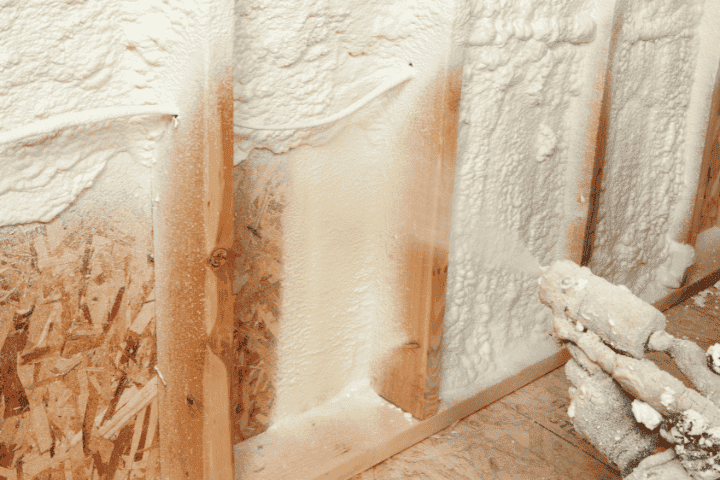Spray foam insulation has become a popular and superior solution for high-end homeowners and businesses alike. It protects against air infiltration, moisture intrusion, and energy loss. In addition, Polyurethane is the most commonly used material in spray foam insulation by spray city insulation. It also acts as an effective air barrier and vapor retarder.
However, the effectiveness of spray foam insulation largely depends on proper installation. Without proper installation techniques, spray foam insulation may fail to provide the benefits it promises. This is why hiring a professional contractor experienced in correctly installing spray foam insulation is crucial. In this article, we’ll explore the importance of proper installation for spray foam insulation and how it can impact your building’s overall performance and energy efficiency.
Importance of Proper Installation for Spray Foam Insulation
Improper installation can lead to gaps and several issues, such as air leaks, condensation buildup, and reduced insulation performance. Even it can lead to health hazards also. As a result, you will face more discomfort in your own house. Therefore, you should also be aware of the importance of proper installation for spray foam insulation.
Poor Insulation Performance
Spray foam insulation is popular for its efficiency in providing insulation. However, when not installed correctly it can lead to poor insulation performance and high energy costs. These consequences can be frustrating and stressful for homeowners trying to save money on their monthly energy bills. The improper installation of spray foam insulation can happen for various reasons, such as lack of experience, inadequate training or using low-quality materials.
Improper installation creates gaps and leaks, reducing the effectiveness of the insulation. As a result, the HVAC system will have to work harder to maintain a comfortable temperature leading to higher energy bills. Moreover, poor insulation can also lead to less comfort as drafts and cold spots become more common throughout your home. These issues can impact both your comfort level and wallet negatively.
Leads to Air Leaks
One common cause of air leaks is gaps in the spray foam caused by incomplete coverage or poor application technique. These gaps allow air to flow freely between your living space and the outdoors, causing your heating and cooling systems to work harder than they need to.
Besides, air leaks can arise from improperly installing or mixing the spray foam chemicals. This can cause the insulation material to expand too much or too little, leading to uneven coverage and further gaps in the insulation barrier. As a result, spray foam insulation may fail to create a barrier that actually traps moisture instead of repelling it.
Mold and Moisture Damage
Improper installation can lead to devastating consequences such as mold and moisture damage. The primary function of spray foam insulation is to create an air barrier that seals off any gaps or cracks that could lead to heat loss. When the application process is incorrectly done, it will create inadequate ventilation environment. As a result, moisture can penetrate the walls leading to mold growth.
One common mistake during installation is applying too little foam. This can cause some parts of the wall cavity to remain uninsulated, leaving room for moisture infiltration. On the other hand, applying too much foam can result in bowing or warping of walls due to excessive expansion pressure. So, if the spray foam is applied too thinly or unevenly, it may not provide adequate protection against outside elements like air drafts or pests.
Structural Damage
One of the most common issues associated with improper spray foam insulation installation is chemical damage. Spray foam sealant contains highly reactive chemicals that can cause serious damage if not handled properly. When these chemicals come into contact with certain materials, such as roof decking or other structural components, they can break down the integrity of those materials over time. This leads to weakened structures that may require extensive repair or replacement to maintain a safe living environment for residents.
Roof damage emerges as another critical issue arising from improper installation. During application, some contractors may fail to consider ventilation requirements in the attic space. That could result in poor air circulation and moisture accumulation. This excess expansion can lead to cracks or even complete collapse of the structure over time.
Health Hazards
Spray foam insulation provides excellent thermal resistance, energy efficiency, and soundproofing capabilities. However, improper spray insulation foam installation can cause significant health hazards due to releasing toxic odors and chemicals. When spray foam sealant is installed, it can release volatile organic compounds (VOCs) that have a strong odor and can trigger respiratory problems. These chemicals include polyols, methylene diphenyl diisocyanate (MDI), and blowing agents such as hydrofluorocarbons (HFCs).
These odors and chemicals can be harmful if inhaled or absorbed through the skin. Exposure to these chemicals can cause headaches, dizziness, nausea, coughing, chest tightness, and eye irritation. Moreover, if the installer fails to wear protective gear such as gloves or goggles during installation, they may also suffer from skin burns.
Conclusion
Proper installation of spray foam insulation is crucial in achieving maximum energy efficiency and indoor comfort. It is important to seek a professional installer with the expertise, experience and equipment to do the job right. With correct installation techniques your insulation will perform at its best for years. Remember, cutting corners on installation can lead to costly repairs and energy bills in the long run.
